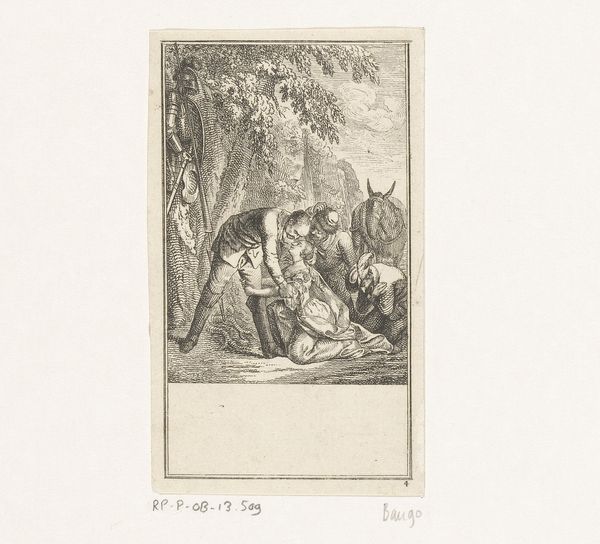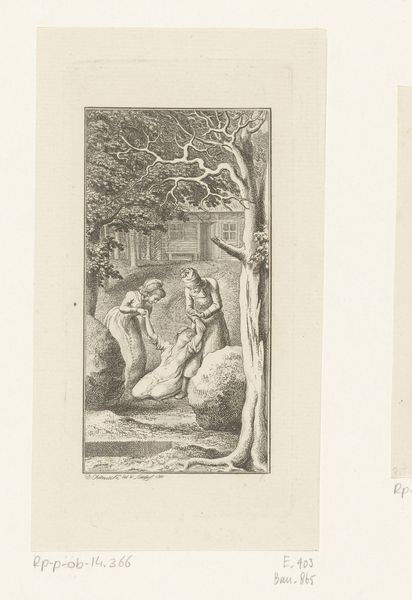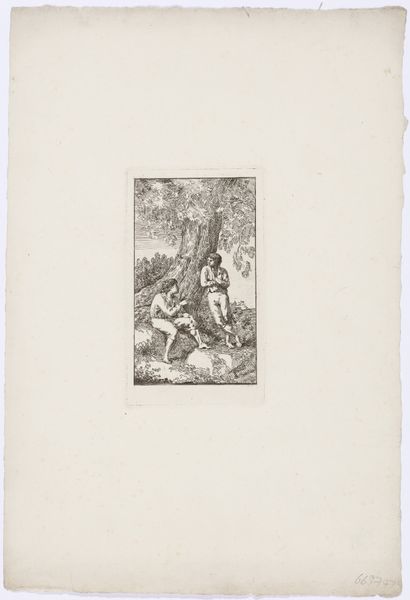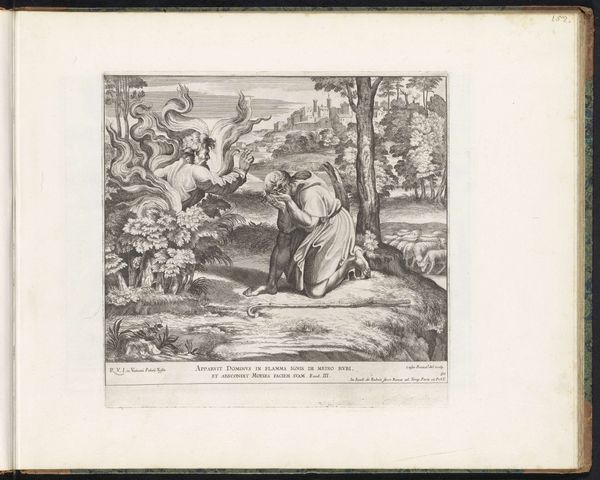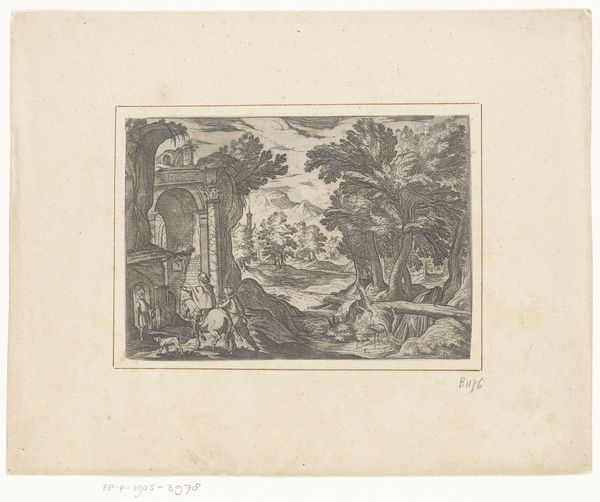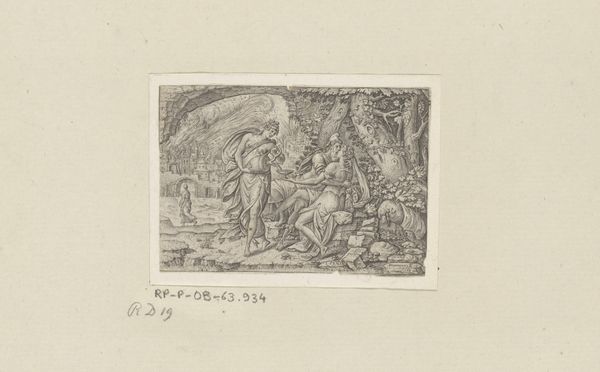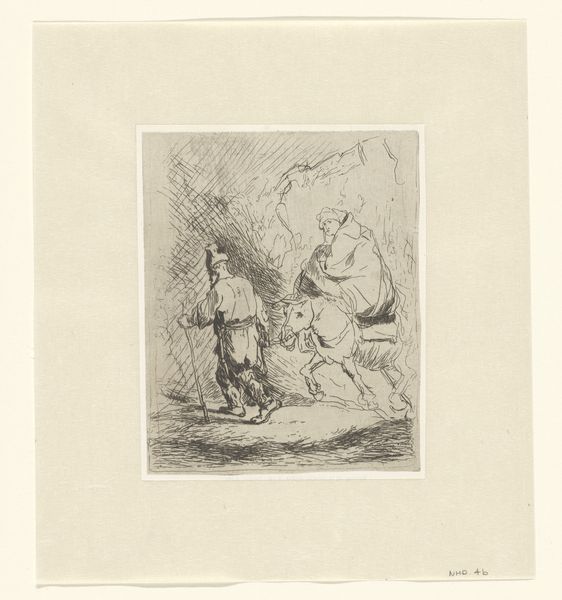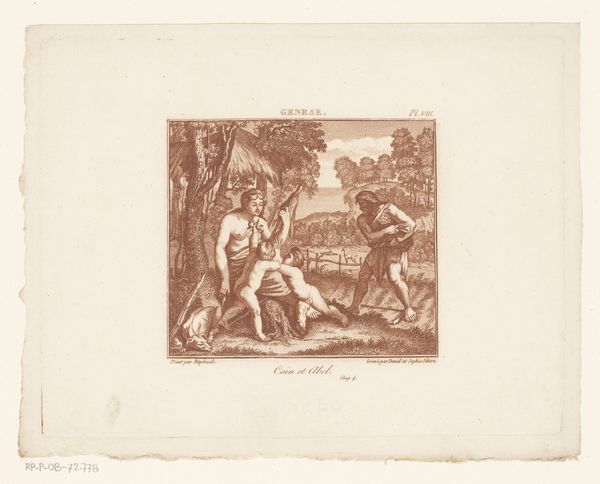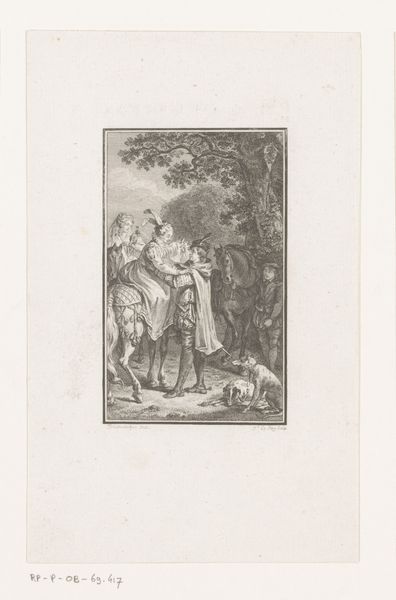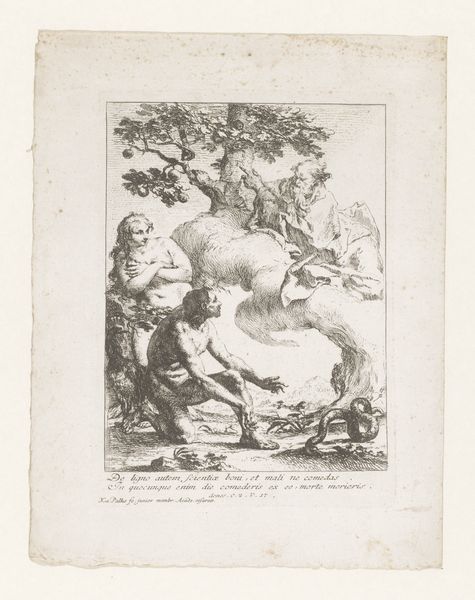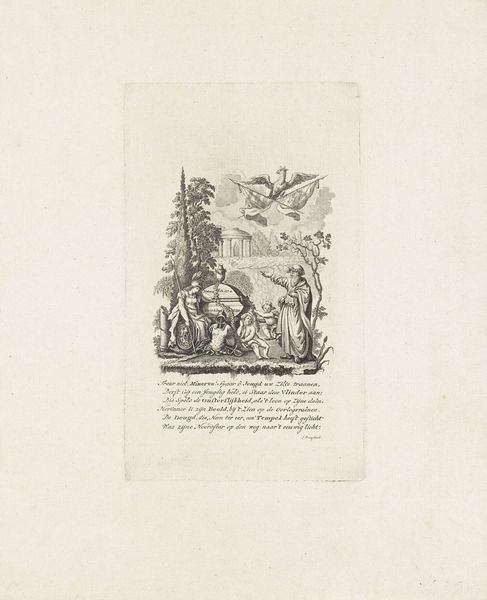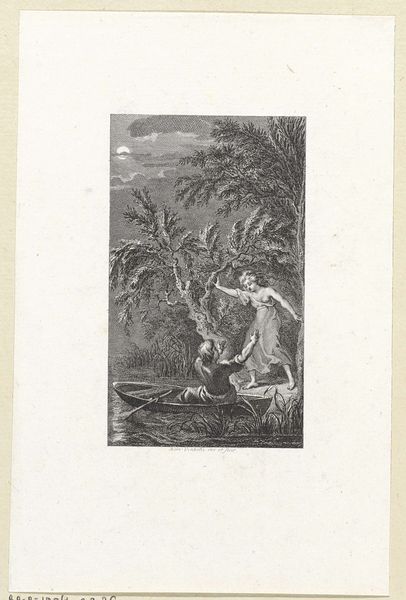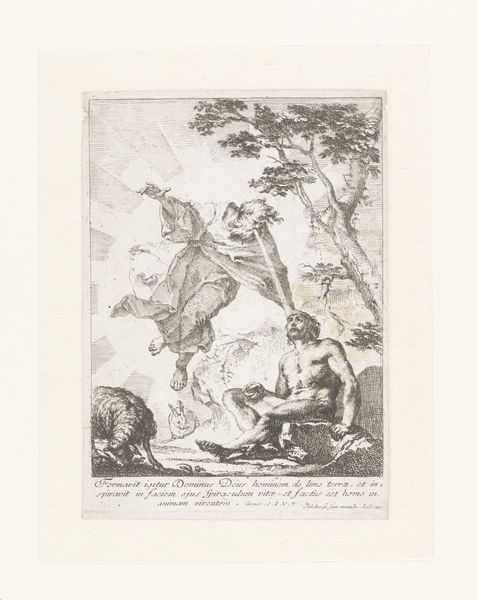
print, engraving
#
baroque
# print
#
old engraving style
#
landscape
#
figuration
#
line
#
history-painting
#
italian-renaissance
#
engraving
Dimensions: height 172 mm, width 237 mm
Copyright: Rijks Museum: Open Domain
Editor: So, this is "Maria zoogt het Christuskind," or "Mary Nursing the Christ Child," a 1682 print by Valentin Lefebvre. It's interesting to see a biblical scene rendered in such a domestic, almost rural setting. What stands out to you about this engraving? Curator: The engraving medium itself is key here. Consider the labor involved, the transfer of the image through a physical process. How does the commercial aspect of printmaking, the mass production of imagery, affect the spiritual narrative it conveys? Think about how prints made art accessible beyond wealthy patrons. Editor: That’s a really interesting point. It democratizes the image. So, how would the average person in the 17th century have engaged with a piece like this versus, say, an oil painting in a church? Curator: Exactly. And it raises questions about originality and reproduction. Is this image simply a devotional aid, or does the print, through its very existence as a multiple, change its status? We also have to think about the materials: the paper, the ink, the metal plate. They all tell a story about trade, resource extraction, and artistic practice. Notice how the line work creates not just an image but texture. Editor: So it's not just about what is depicted, but also about the labor, the access, and the materials that bring the artwork into existence. Curator: Precisely. Considering those aspects really enriches our understanding beyond the purely religious symbolism or art historical analysis. Editor: I never really thought about printmaking that way before, considering it in relation to broader production and access. Thanks, it's a fresh perspective. Curator: And perhaps it helps us see these images not as static objects but as active participants in a larger social and economic web.
Comments
No comments
Be the first to comment and join the conversation on the ultimate creative platform.
